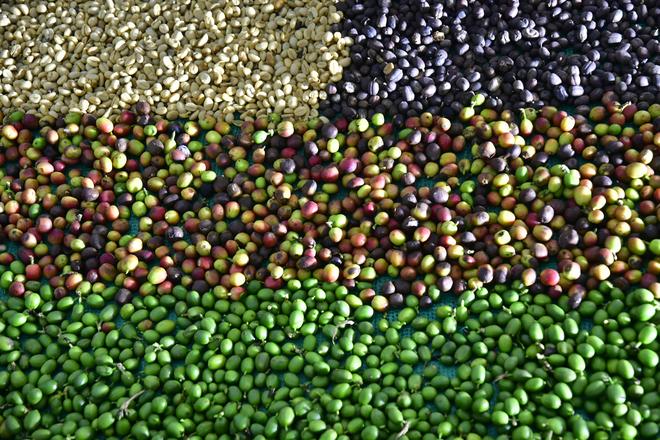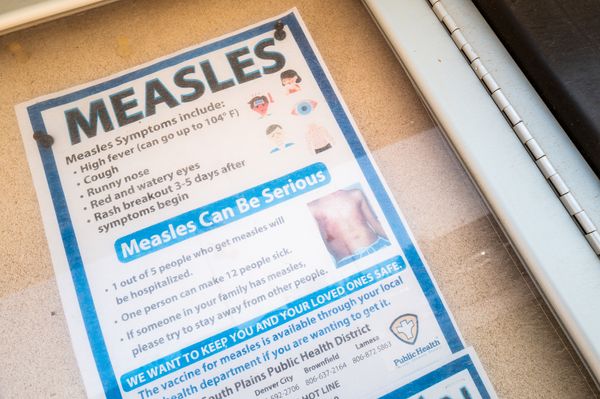Sanketh Appaiah, a young coffee planter in a village near Madikeri in north Kodagu, is now the proud owner of a new SUV thanks to the rising prices of coffee over the past three months. The 42-year-old is happily driving his new vehicle across the hilly terrain of the small district in south Karnataka.
The soaring prices of coffee beans, driven by a global shortage in crop production, have provided a ray of hope for coffee growers in Karnataka, which is the highest coffee-growing State in India. Currently, at a 15-year high, these prices are a boon for growers who have weathered a tumultuous decade.
“I own an 8-acre Robusta coffee plantation. For the first time in 15 years, the coffee price has increased, helping me to fulfil my plan of buying a new SUV this year,” said a visibly thrilled Appaiah. Like him, many coffee planters who are experiencing good prices after a decade are investing in various assets, such as plots of land, apartments, houses, and new vehicles.
A prominent cooperative bank in Kodagu received around 800 applications in a single day for vehicle loans in April. Speaking on the condition of anonymity, the bank manager said, “We have never seen so many people applying for vehicle loans. This trend can be attributed to the increase in crop prices. At the same time, we are also noticing that farmers are repaying their loans on time this year, which is also due to the increase in coffee prices.” Karnataka contributes 71% to the total production of coffee in India, followed by Kerala at 21% and Tamil Nadu at 5%.
Some farmers holding on to produce
Abubakr Ahmad, a coffee trader in Gonikoppa in south Kodagu, says that the price of a 50-kilo bag of Robusta beans has surged to nearly ₹11,000. Robusta is the primary coffee variety grown in Kodagu. “This year marks a significant increase from the average prices seen since 2008 when the price of Robusta was between ₹3,000 and ₹4,000,” he said.
“Many coffee growers have sold their coffee, while a few, especially large-scale planters, are holding onto their produce, anticipating a further increase in prices in the days to come. However, over the last two weeks, there has been a slight drop in prices,” Ahmad added.
K.G. Jagadeesha, CEO and secretary of the Coffee Board, said a significant increase in global demand was driven primarily by low production in Brazil, the world’s leading coffee exporter. “Despite poor yields, coffee production is expected to reach 3.54 lakh tonnes, a marginal increase over last year’s production of 3.52 lakh tonnes, in India,” he said.
Remembering boom times
People in the coffee-growing districts in Karnataka—Hassan and Chikkamagaluru, besides Kodagu—remember the 1990s when the price of coffee went up for the first time since 1942 when the Coffee Board was set up. This brought about many changes in the lifestyle of coffee growers. Brand new cars were spotted on the narrow lanes that led to estates in parts of Sakleshpur, Mudigere, Koppa, N.R. Pura, and Balehonnur.
To provide better schooling for their children, the planters invested in building houses in Hassan, Chikkamagaluru, and some other cities, in addition to fixing modern amenities in their rural farmhouses. They shifted to cities, travelling to their estates now and then. This was the period when the free-sale quota (FSQ) was introduced for coffee in 1992. Prior to that, growers had to sell their entire harvest to the Coffee Board. Liberalisation of the economy ushered in changes in the trading of the commodity.
This year, farmers in Hassan and Chikkamagaluru have not benefitted much since the primary variety grown there is Arabica, which has not seen as much of an increase in price as Robusta.

Small farmers still suffer
The prevailing price of coffee has prompted growers to recall the 1990s, but they warn that it might be a bubble and that farmers should be cautious. They also say rising prices should be weighed against escalating production costs.
Many growers in Hassan and Chikkamagaluru districts argue that, ideally, the price of coffee should have gone up long ago. Surendra T.P., a coffee grower at Kesaganahalli in Sakleshpur taluk and director of the Karnataka Growers’ Federation, said for a healthy, sustainable growth of the coffee sector, the growers should have got the current price in the early 2000s.
Besides, the current increase in coffee prices has not helped small and medium growers. “The harvesting is done between December and February. By the end of February, nearly 80% of coffee had been sold. At that point, the price was around ₹6,500 per bag of 50 kg. Only later did it cross ₹8,000 per bag.”
Growers are forced to sell their produce before February or March, as they have financial commitments to fulfil at the end of the financial year. They have to clear loans to maintain a good credit rating.
Price has gone up, but so has input cost
Despite the euphoria over the prevailing prices, growers point out that the input cost has gone up at an alarming rate. Surendra feels the current increase in price has no significant value, given the rise in the cost of other essential items. “When coffee was opened for free trade in the 1990s, the price of Robusta per 50 kg was around ₹3,000. Briefly, it went up to ₹10,000. Then, petrol was sold at ₹14.75 per litre, and diesel at ₹10 per litre. Now, compare the rate of increase in the prices of petrol and diesel with coffee in the last 30 years,” he explained.
The cost of labour has increased over the years. Coffee growers pay more than what the workers get under the MGNREGA, but coffee plantations are not covered under crop insurance. The compensation paid during a drought or flood is negligible considering the investment made by the growers, they say, pointing to cycles of drought, flood, and landslides the district has witnessed over the past few years.
Prakash Ponnanna, a coffee planter in Virajpet, Kodagu, pointed out that while large-scale growers have been able to mitigate the impact of drought through various water management measures, smaller growers are suffering.
“Although Kodagu is a hilly district where the river Cauvery, the lifeline of south India, originates, this year, the district is facing a severe drought and water shortage. The coffee, which requires irrigation, does not have adequate water. Hence, the production next year will be much less than this year. Whatever the price increase is, it will not benefit us much eventually,” Ponnanna explained.
Labourer shortage and other worries
In the last 10 years, coffee growers have struggled with low prices and high production costs, exacerbated by labour shortages and crop diseases. Consequently, many small and marginal growers abandoned cultivation and diverted their efforts towards real estate, tourism, or more lucrative crops like areca nut, black pepper, and avocado.
Another significant issue that coffee estates are facing is a labour shortage. According to planters, this year, there was a severe shortage of labour, leading to situations where many planters had no workers to harvest the crop, resulting in berries dropping to the ground.
“Over the past five years, we have faced significant labour shortages for coffee picking. Previously, labourers would come from north Karnataka, Tamil Nadu, and parts of Mysuru. However, they have stopped coming as they find employment in cities, particularly in construction work. In the last three years, we have had people coming from Assam. This year, they did not come due to the general elections. As a result, we incurred losses as crops were not harvested. Hence, the price rise will not benefit us,” rues Muthappa M.N., a planter in Virajpet.
In recent years, farmers in Kodagu, Hassan, and Chikkamagaluru have been facing man-elephant conflict. The elephant menace has left the community in constant worry. A majority of the people who died in elephant attacks were plantation workers. In Kodagu district alone, six people were killed in elephant attacks on coffee estates from January to date. Whenever a herd of elephants strolls through an estate, hundreds of coffee plants are damaged.
Manoj Mandappa, a coffee planter from Siddapura in Kodagu, said, “In the last three years, elephants have been destroying crops like coffee and banana. The authorities concerned have not been able to solve this issue.”
For now though, Appaiah and farmers like him are happy with the surge in the price of coffee. “If the current price continues to remain in this range in the coming years and if we are blessed with a good crop, small planters like us will definitely see better days in future. This will enable us not only to make personal investments, like buying a car or a house but also to enhance our plantations. For example, I used to apply fertilisers only once a year for my coffee plants, but now I can afford to do this twice a year due to the good prices we have been receiving,” Appaiah said.







